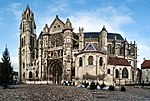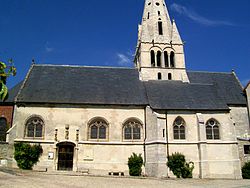Abbey of St. Vincent, Senlis
1060s establishments in France1065 establishments in Europe1791 disestablishments in FranceAugustinian monasteries in FranceChristian monasteries established in the 11th century ... and 3 more
Monasteries destroyed during the French RevolutionMonasteries in OiseSource attribution

The Abbey of St. Vincent, otherwise the Royal Abbey of St. Vincent (French: Abbaye Saint-Vincent de Senlis), was a former monastery of canons regular in Senlis, Oise, which was dissolved during the French Revolution. Late in their history, they became part of a new congregation of canons regular with the motherhouse at the Royal Abbey of St Genevieve in Paris, known as the Genofévains, widely respected for their institutions of learning.
Excerpt from the Wikipedia article Abbey of St. Vincent, Senlis (License: CC BY-SA 3.0, Authors, Images).Abbey of St. Vincent, Senlis
Rempart Bellevue, Senlis
Geographical coordinates (GPS) Address External links Nearby Places Show on map
Geographical coordinates (GPS)
| Latitude | Longitude |
|---|---|
| N 49.2025 ° | E 2.5894444444444 ° |
Address
Abbaye Saint-Vincent de Senlis
Rempart Bellevue
60300 Senlis
Hauts-de-France, France
Open on Google Maps









